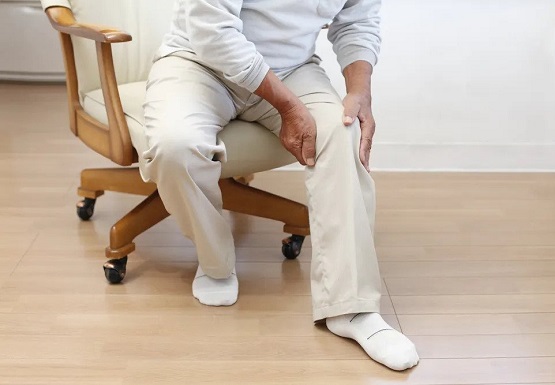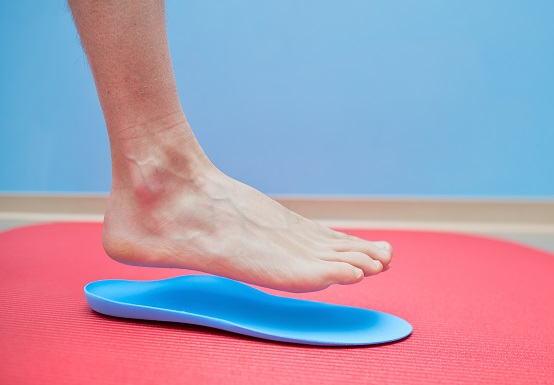Is It Time for a Knee Replacement?

As one ages, an unwelcome companion often emerges – persistent knee pain. For some, this discomfort impacts not just their daily activities, but mobility itself, prompting the question: Is it time for a knee replacement? Dr Alvin Tan Chin Kwong, orthopaedic surgeon, offers clarity on what a knee replacement surgery is, the medical conditions necessitating it, and modern procedures and recovery approaches available.
Understanding knee replacement
Knee replacement surgery, also known as knee arthroplasty, is a surgical procedure where a damaged knee joint is replaced with an artificial implant.
It is often performed for conditions such as osteoarthritis, rheumatoid arthritis and other inflammatory arthritis. It may also be recommended in other conditions such as osteonecrosis (when bone tissue dies) and occasionally, even for an acute fracture when the injury cannot be treated with a surgical repair.
The purpose of a knee replacement is to relieve pain, restore function, and to correct any abnormalities in the alignment of the lower limb. Dr Tan highlights, “When the pain in your knee is causing significant impairment to your daily activities such as walking, jogging, stair climbing and squatting, it may be time to consider a knee replacement surgery.”
Many patients are worried, or have been told, that they are too young for a knee replacement surgery. Dr Tan dispels this myth, asserting that while there may be problems with the longevity or failure of an artificial knee implanted into a very young patient, there is actually no cut-off age.
Total knee surgery is highly successful and most modern implants have been shown to last 15 to 20 years. In addition, measures such as computer aided and robotic surgery have been shown to potentially improve the longevity of implants in young patients.
– Dr Tan
Choosing the right surgery
The knee joint is divided into three compartments — the medial tibiofemoral compartment (inside of the knee), lateral tibiofemoral compartment (outside of the knee) and the patellofemoral compartment (kneecap).
When all three compartments are affected by the arthritis, a total knee replacement is usually performed. However, when only one or two of these compartments are
affected, then a partial knee replacement emerges as a viable option.
In a total knee replacement, bone and cartilage in all three compartments are removed and replaced with a prosthesis.
For a partial knee replacement, only the cartilage and bone in the affected compartment are removed to
accommodate the artificial joint. The remaining cartilage, bone and ligaments in the other compartments are left untouched.
The decision on whether to perform a total or partial knee replacement also depends on how severe the deformity of the knee is, the integrity of the knee ligaments, and the patient’s overall health and lifestyle.
Both total and partial knee replacement can be carried out through conventional or robotic assisted surgery.
Optimising recovery for patients
A comprehensive, evidence-based approach known as Enhanced Recovery After Surgery (ERAS) is the modern approach used to allow the patient to recover after surgery quickly, while keeping the patient comfortable and safe. Commencing with pre-operative optimisation and prehabilitation, ERAS ensures that the patient and the knee are in the best condition to benefit from surgery.
“Intraoperatively, we employ a multimodal approach to analgesia to keep patients pain-free and comfortable, facilitating immediate postoperative rehabilitation, and avoiding complications from prolonged bed rest and hospital stay,” Dr Tan elaborates.
With advanced surgical techniques and minimally invasive procedures, downtime can be minimised. Most patients can walk on the same day after a total knee replacement, although Dr Tan recommends using a walking stick for about four to six weeks. The surgical wound itself will take around two weeks to heal.
The typical absence from work can span two months, although those with more sedentary jobs may resume work in as little as three weeks.
Recovery for a partial knee replacement can be expected to be even faster.
Top 5 tips to prevent knee problems
- Maintain a healthy weight to reduce stress on the knees.
- Engage in regular exercise to strengthen the muscles that support the knees.
- Use proper techniques and equipment during sports or physical activities.
- Manage existing health conditions, such as arthritis, with medical guidance.
- Seek medical help if injured to get treated early
Article contributed by Dr Alvin Tan Chin Kwong accredited doctor from Mount Alvernia Hospital.
This article is taken from our MyAlvernia Magazine Issue #52. Click here to read the issue on our website.


